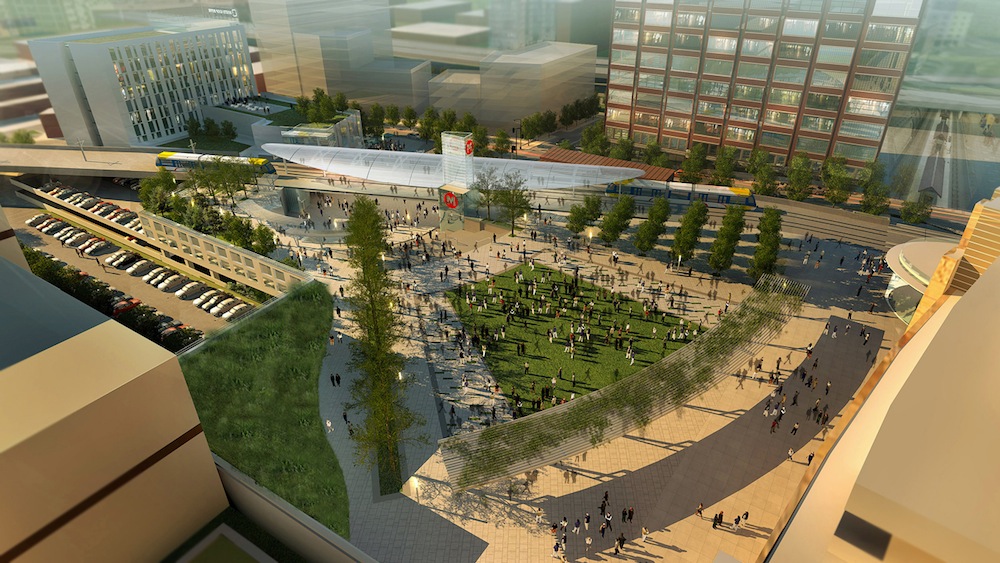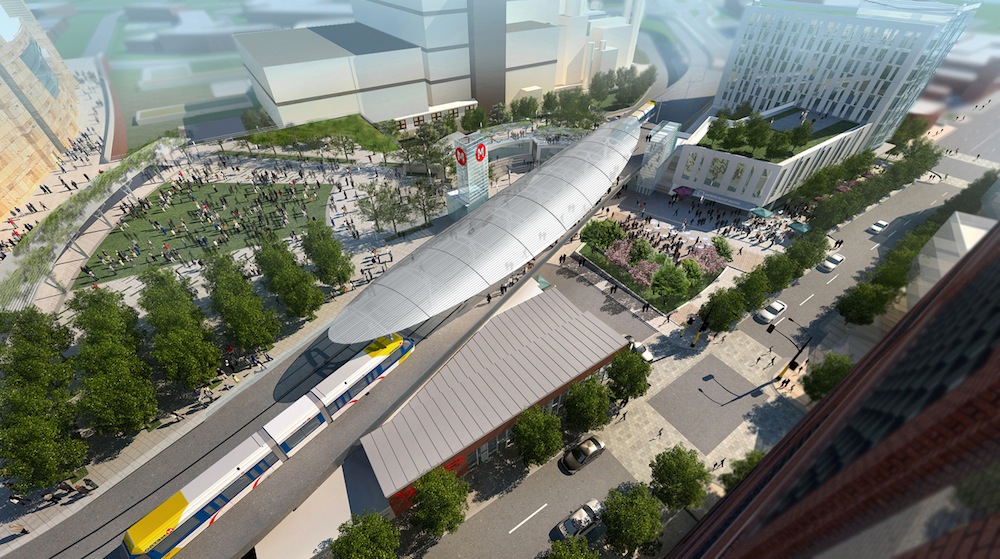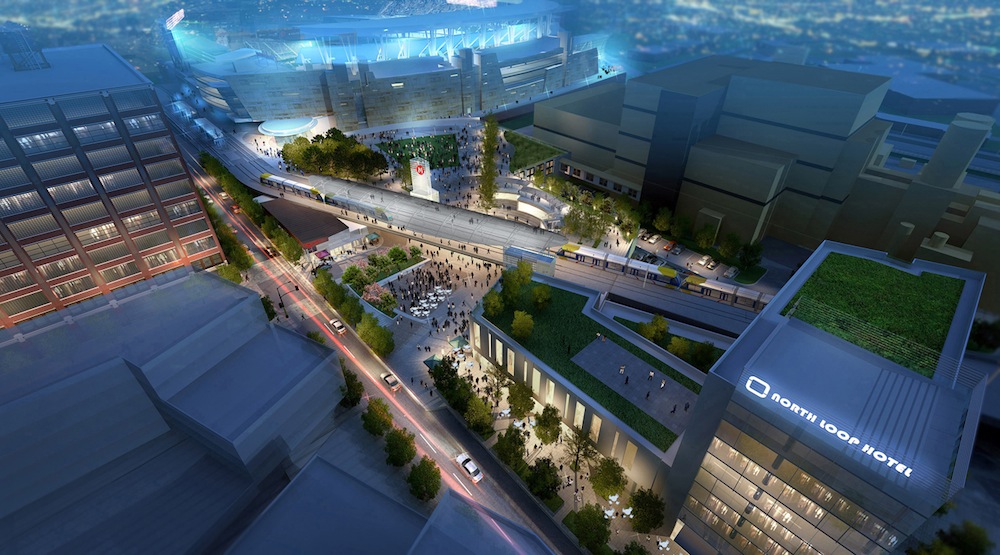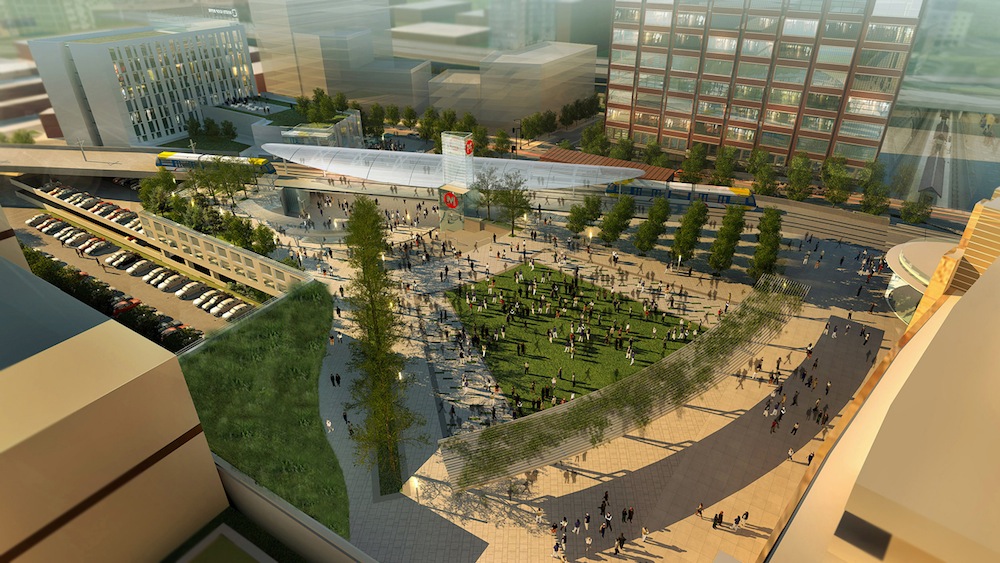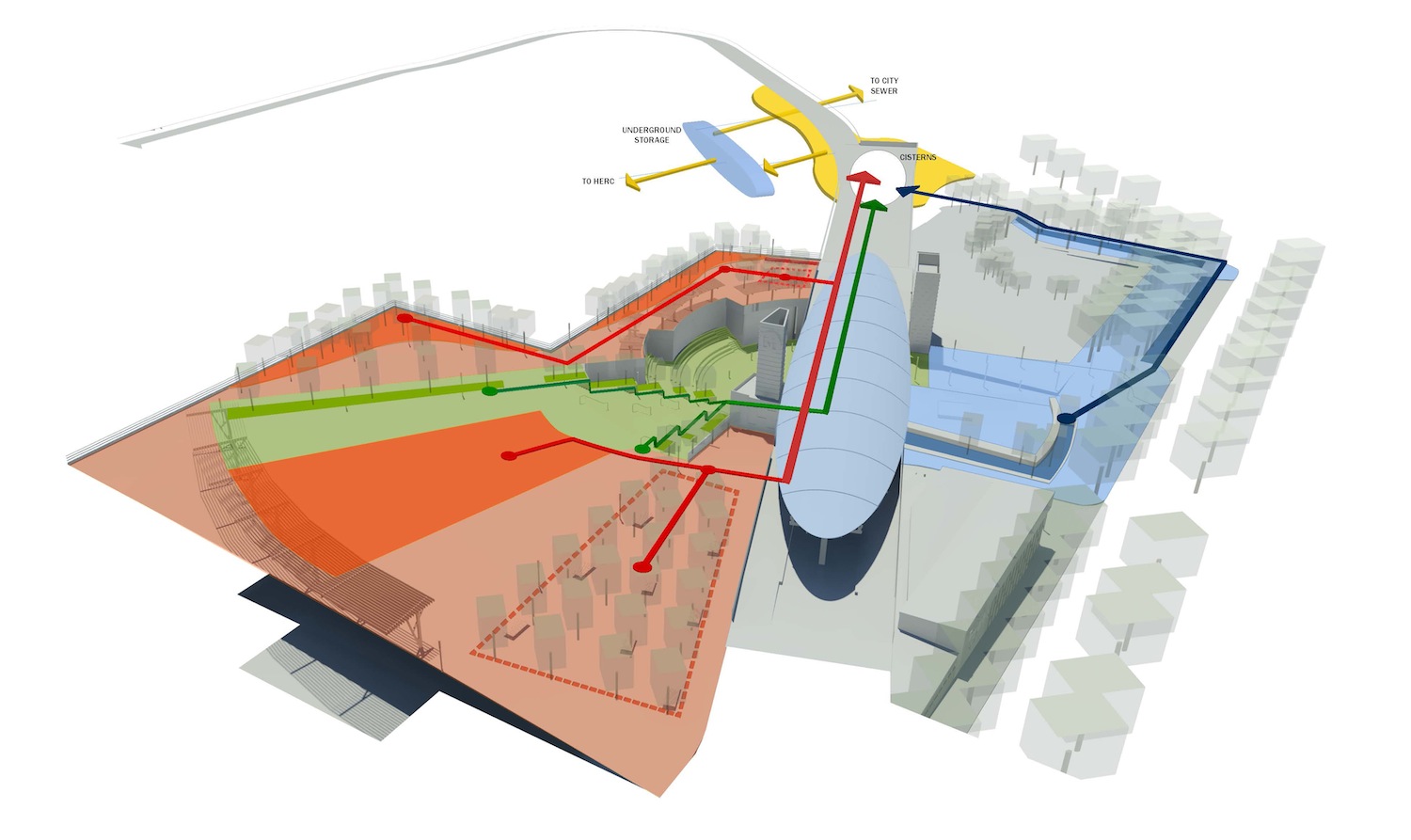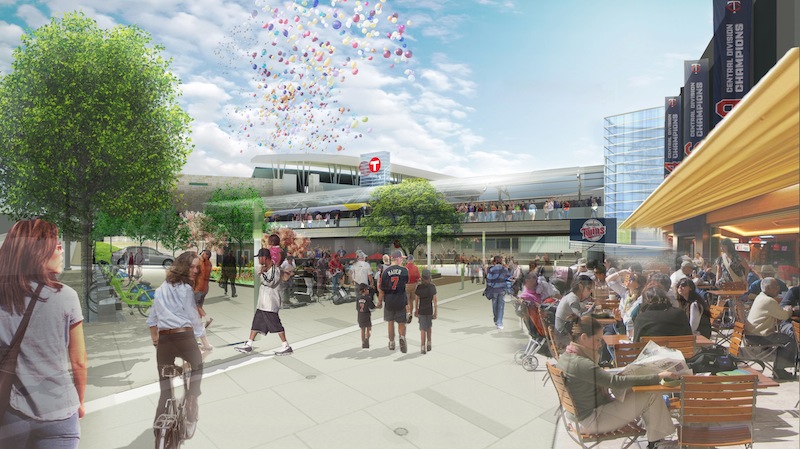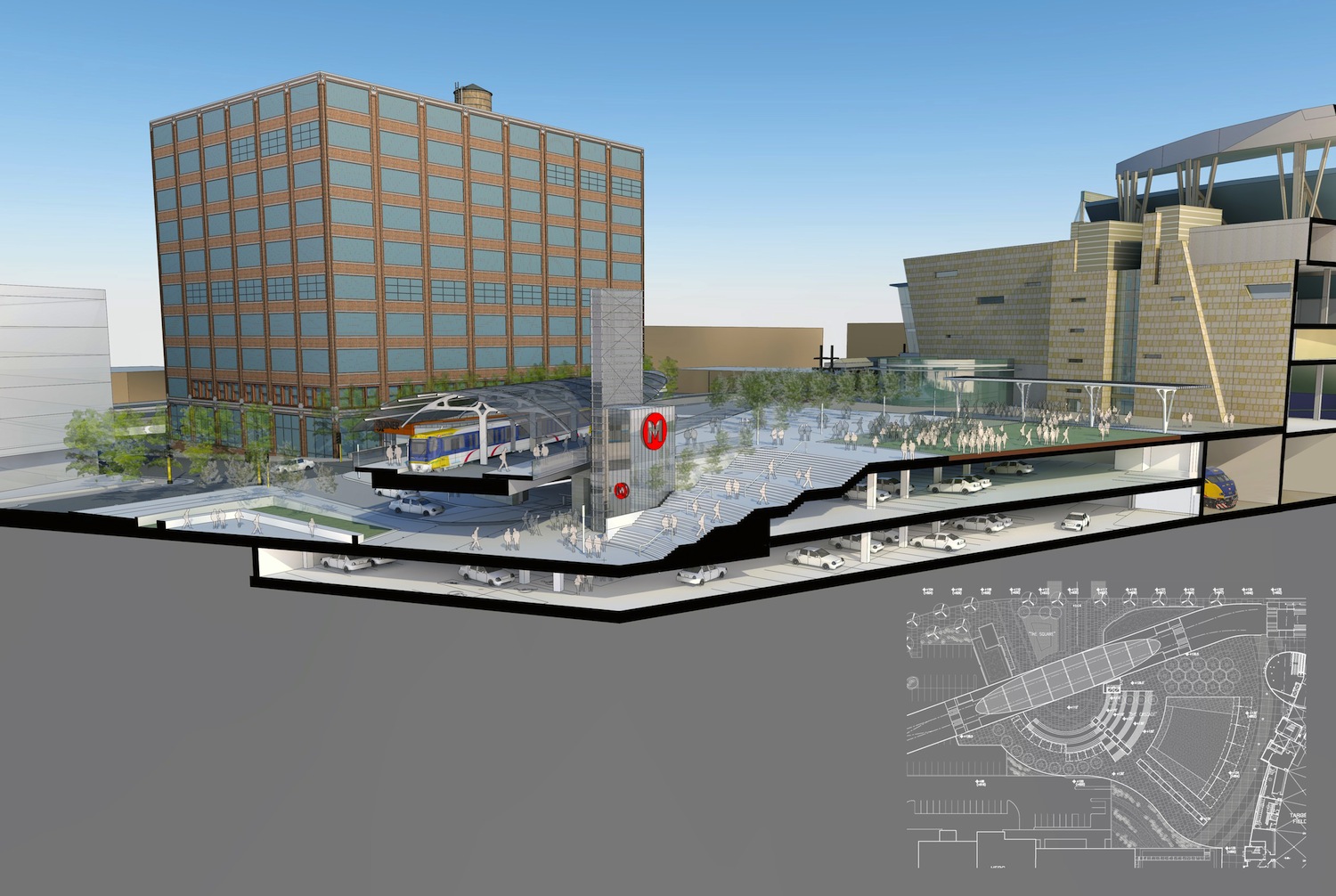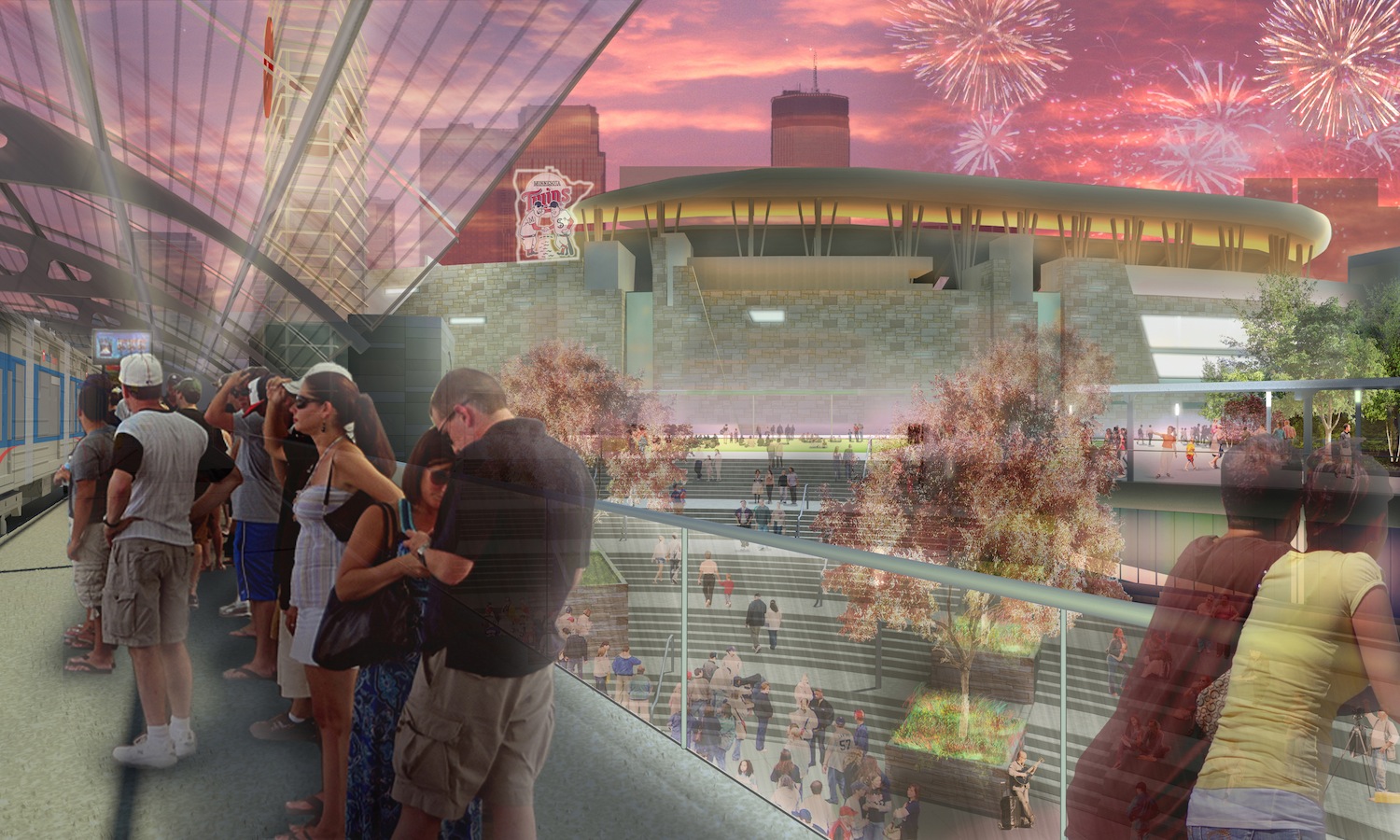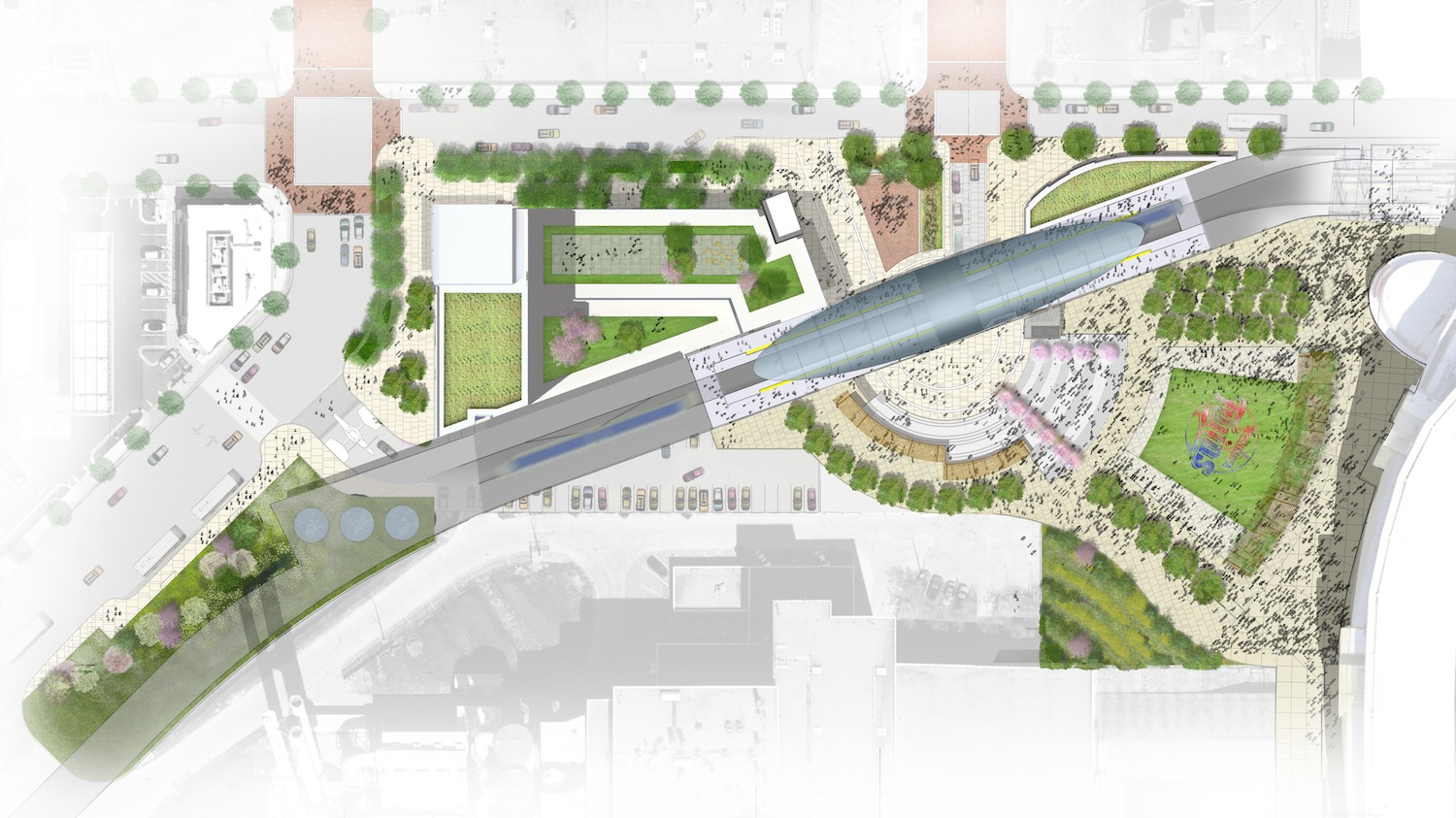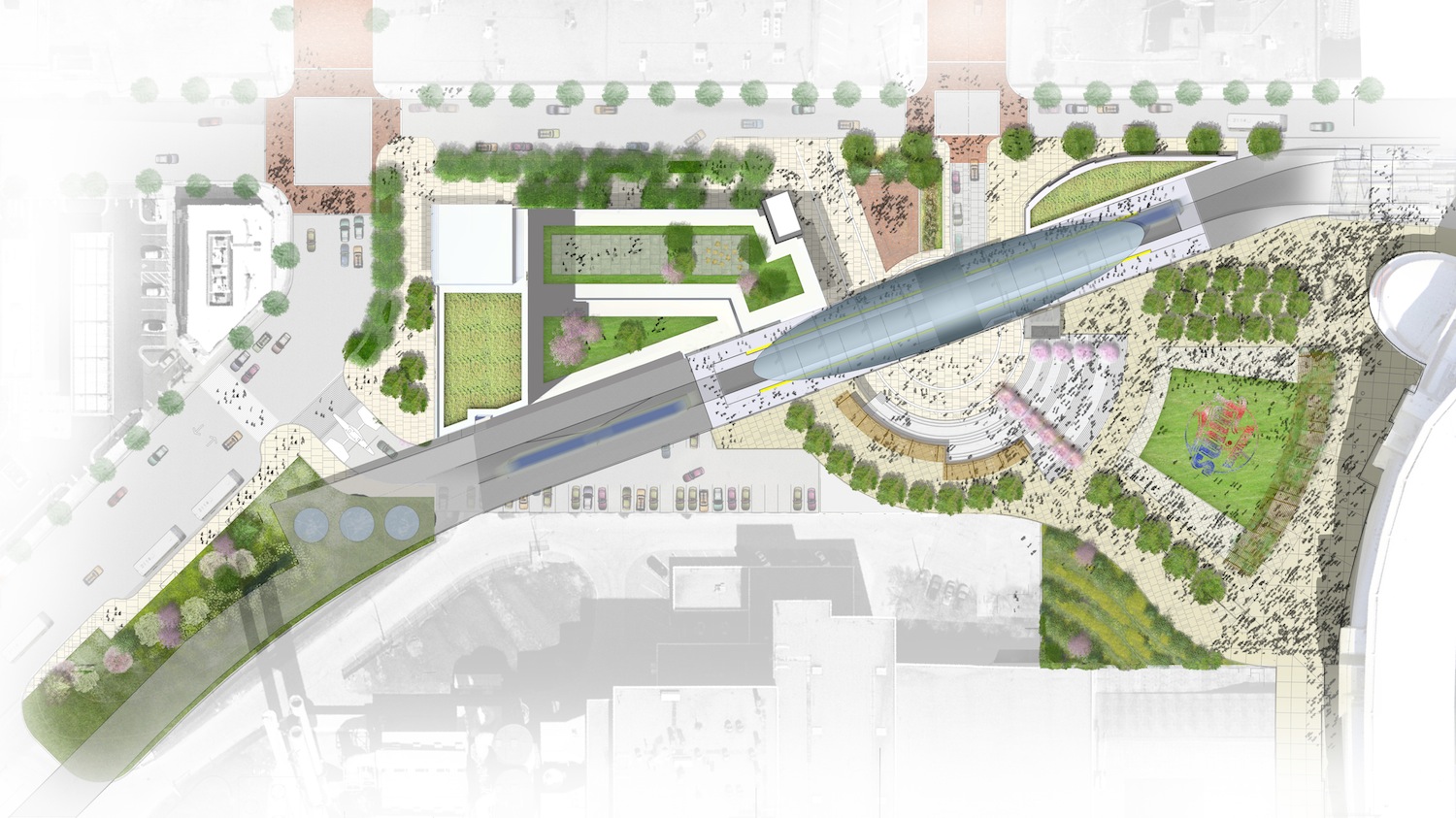Great cities are defined by great places. It is the avenues, squares, grand halls and, of course, the people who inhabit them that give a city its character. A unique blend of architecture, open space, transit, infrastructure, history, culture, and art, the Interchange represents an exciting vision of this character manifest in an urban environment. The goal for the Interchange is to create a place that is uniquely tailored to Minneapolis and its citizens—a place that is iconic, modern, and timeless. It will fulfill people’s aspirations for clean and efficient transportation while also serving as a proud calling card for those who call the city and metro area their home.
The Interchange will serve as the main transportation hub for the northern Minneapolis region. Situated a few blocks from the banks of the Mississippi River, the new station will connect approximately 500 arriving and departing trains daily, more than 1,900 daily bus routes, and hundreds of miles of bike and walking trails. This bold transit project is the result of a partnership between Hennepin County, the Hennepin County Regional Railroad Authority, and the Hennepin County Housing and Redevelopment Authority. It is funded by a mix of federal, state, and local sources, more than half of which comes from local government. During the construction phase, the Interchange will create more than 300 full-time local jobs. The design-build team is being led by EE&K a Perkins Eastman company and Knutson Construction.
Open Transit Design
History has taught us that the design visionaries behind the truly great transit destinations intended to create an infrastructure that functioned beyond as a transit hub. These projects used transit as a vehicle to design iconic spaces—the great hall, the retail passages, and the city sightlines that embody the culture of a city—while creating enormous real estate value. And this is what the City of Minneapolis and surrounding Hennepin County were trying to achieve with the Interchange. Designed by EE&K, a Perkins Eastman company, this nexus of transit and culture is based on a set of design principles called "Open Transit" that have been developed over the last 15 years.
Open Transit is a set of principles for modern station design that incorporate the surrounding spaces and additional modes of transportation to create an overall iconic place. If we are to make cities more sustainable we need to create transit places that will also sustain and enhance urban life and foster development. The Interchange exemplifies this concept in several ways: integration of all available transit modes, an orientation toward real estate development, architectural design that make places, and the integration of culture with transit design. The station will function as a backdrop to performance stage and appeal for non-transit users—people want to be there even if they aren’t using transit.
Making Development the Priority
The design of the Interchange is compact and connects seamlessly with the façade of Target Field, home to the Minnesota Twins baseball team. With such a modest footprint, the Interchange opens up the remainder of the site to maximize development opportunities. By leveraging the value of the 6th Avenue/5th Street intersection, this new development and subsequent ones within the site will help create a key link between the historic North Loop neighborhood and downtown Minneapolis. The Interchange will be a model for how transit design can stimulate economic development and foster environmental stewardship.
Transit centers designed according to the principles of Open Transit are development-oriented, meaning they catalyze investment in a region as much as they follow it. One of the current challenges of the site that the Interchange addresses is the massive influx of people to the area since the introduction of Target Field, which opened in 2010. And the opportunities it creates are even greater than the problems it solves. The team behind the Interchange explored at length how to integrate existing amenities into one new place that capitalized on a new transit line.
As a result, the hub will comprise the Cascade Amphitheater, a Great Lawn, and commuter-oriented retail. Each will provide the community with numerous programming possibilities that will serve the immediate and surrounding area year-round. The cascading staircase that can be used as an amphitheater, gathering space, and vertical transportation to the Great Lawn will draw people from all over for a relaxing picnic or a quiet respite from the bustle of city life.
The Interchange will create a new emblem of civic identity and community pride in its mix of uses by introducing the first of a new generation of facilities that truly integrate transit and culture. Like Grand Central in New York City, it will draw tourists, workers, shoppers and diners. As an oasis in a part of the city where large-scale freeway infrastructure collides with the historic grand warehouses of the North Loop neighborhood, it will fundamentally change Minneapolis and catalyze future development in the area.
Seamless Sustainability
The Interchange in Minneapolis pushes the lessons of Open Transit design even further with a holistic approach to the building as an environmentally responsible community member. It aims to help sustain Minneapolis's urban revival by incorporating features like rainwater collection for irrigation and building use, and a symbiotic use of water with recycling trash. The LEED-certified and Minnesota State-recognized B3 accredited development will use heat from the nearby Hennepin Energy Recovery Center (HERC) to heat sidewalks in the winter months. All concrete removed from the existing site will be re-incorporated back into the project, helping to curb costs related to trucking and the procurement of imported crushed rock. The new HERC administration building on the site is being designed with energy-efficient components, which will cut overall energy consumption by 30%.
Open Transit design represents the future of sustainable transit development in America’s vibrant urban centers, re-envisioning and refashioning the best of the past for the future. The Interchange in Minneapolis will be one of the most efficient demonstrations in the United States of how transportation can integrate with commerce and culture to create rich development opportunities.
Construction on the Interchange continues on schedule, and the project will open in April of 2014.
Related Stories
| Apr 24, 2014
Unbuilt and Famous: LEGO releases box set of Bjarke Ingels' LEGO museum
LEGO Architecture has created a box set that customers can use to build replicas of the LEGO Museum, which is not yet built in real life. The museum, designed by the Bjarke Ingels Group, will commemorate the history of LEGO.
| Apr 23, 2014
Ahead of the crowd: How architects can utilize crowdsourcing for project planning
Advanced methods of data collection, applied both prior to design and after opening, are bringing a new focus to the entire planning process.
| Apr 23, 2014
Developers change gears at Atlantic Yards after high-rise modular proves difficult
At 32 stories, the B2 residential tower at Atlantic Yards has been widely lauded as a bellwether for modular construction. But only five floors have been completed in 18 months.
| Apr 23, 2014
Experimental bot transfers CAD plans onto construction sites
The Archibot is intended to take technical data and translate it into full-scale physical markings on construction sites.
| Apr 23, 2014
Mean and Green: Top 10 green building projects for 2014 [slideshow]
The American Institute of Architects' Committee on the Environment has selected the top ten examples of sustainable architecture and ecological design projects that protect and enhance the environment. Projects range from a project for Portland's homeless to public parks to a LEED Platinum campus center.
| Apr 23, 2014
Architecture Billings Index dips in March
The March ABI score was 48.8, down sharply from a mark of 50.7 in February. This score reflects a decrease in design services.
Sponsored | | Apr 23, 2014
Ridgewood High satisfies privacy, daylight and code requirements with fire rated glass
For a recent renovation of a stairwell and exit corridors at Ridgewood High School in Norridge, Ill., the design team specified SuperLite II-XL 60 in GPX Framing for its optical clarity, storefront-like appearance, and high STC ratings.
| Apr 22, 2014
Transit-friendly apartment building now under construction
The new $44 million community is situated on eight acres, directly adjacent to the local Park-n-Ride, and a quick walk from a nearby light rail station.
| Apr 22, 2014
Bright and bustling: Grimshaw reveals plans for the Istanbul Grand Airport [slideshow]
In partnership with the Nordic Office of Architecture and Haptic Architects, Grimshaw Architects has revealed its plans for the terminal of what will be one of the world's busiest airports. The terminal is expected to serve 150 million passengers per year.
| Apr 21, 2014
10 design-build best practices
Design-build requires more than a good contract and appropriate risk allocation, says the DBIA. Everyone from the owner to the subcontractors must understand the process, the expectations, and fully engage in the collaboration.


